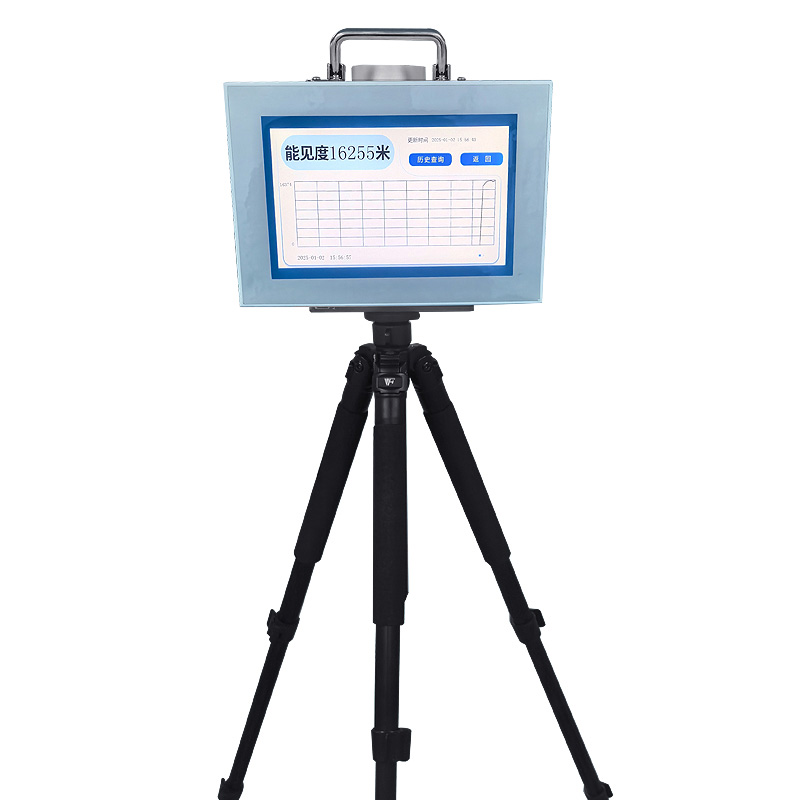Shandong Fengtu IOT Technology Co., Ltd
Sales Manager:Ms. Emily Wang
Cel,Whatsapp,Wechat:+86 15898932201
Email:info@fengtutec.com
Add:No. 155 Optoelectronic Industry Accelerator, Gaoxin District, Weifang, Shandong, China

Sales Manager:Ms. Emily Wang
Cel,Whatsapp,Wechat:+86 15898932201
Email:info@fengtutec.com
Add:No. 155 Optoelectronic Industry Accelerator, Gaoxin District, Weifang, Shandong, China

Model:FT-BN20
Brand:fengtu
1.Introduction to Portable Visibility detector
Portable visibility detector is a forward scatter visibility meter that is robust, lightweight and compact and can also be used for maneuvering measurements on moving carriers.BN20Portable visibility detector uses forward scattering method to measure the total extinction coefficient of the air and calculates the current visibility.It is widely used in emergency, road traffic, meteorological and other scenarios.
2.Technical features of Portable visibility detector
1.Integrated portable design, light weight, easy to carry, ready to use;
2.10.1-inch high-bright touch screen, displaying data and historical curves in real time; ☆
3.Built-in large-capacity SD card (8G), data is saved in real time, and it supports query and export;
4.Built-in large-capacity lithium battery, which is convenient for outdoor emergency use;
5.The instrument shell is high-quality aluminum material, and the whole machine has excellent waterproof, dustproof and collision-proof performance;
6.Built-in watchdog circuit to ensure reliable and stable outdoor operation for a long time;
7.The instrument communication and power interfaces both contain lightning protection designs, which greatly reduce lightning strikes and static damage;
8.24V power supply, low power consumption, and can be powered for a long time;
9.The digital interface uses RS232 and is uploaded actively without adaptation protocol;
3.Portable visibility detector execution standards
QX/T 536-2020 Forward scattering visibility meter test method
4.Portable visibility detector technical parameters
| Main parameters | Parameter range | Resolution | error | |
| Range | BN10 | 10km☆ | 1m | ≤2km ±2%2km~10km ±5%>10km ±10% |
| BN20 | 20km☆ | |||
| Repeatability | ≤4% | |||
| Operating temperature | -20~60℃ | |||
| Working humidity | 0~100%RH | |||
| Working power supply (adapter) | 100-240V input 24V output 2.5A | |||
| Power consumption | <10W | |||
| Battery capacity | 6.6AH | |||
| Working hours | ≥12h | |||
| size | 300x150x220mm (Length x Width x Height) | |||
| weight | ≤10kg | |||
Agriculture sensors are used in agricultural production to collect data required for the growth of farmland crops, such as air temperature and humidity, light intensity, and carbon dioxide, and to monitor changes in factors such as farmland, weather, irrigation, and fertilization....
In the past, due to weak safety monitoring technology and lack of comprehensive consideration of protective measures, serious economic losses and negative social impacts were caused, and even traffic was interrupted. The state and local governments have incorporated slope management into the scope o...
Transmission lines often extend over tens or even hundreds of kilometres, traversing diverse terrain such as hills and plains, passing through farmland, villages, industrial areas and forests. Due to the variable geographical and climatic conditions along the route, transmission lines are exposed to...
Photovoltaic environmental monitor is a device used to monitor the environmental parameters of photovoltaic panel modules and their surroundings, which is commonly used in solar power stations, rooftop photovoltaic power generation and household photovoltaic power generation systems. The device is c...